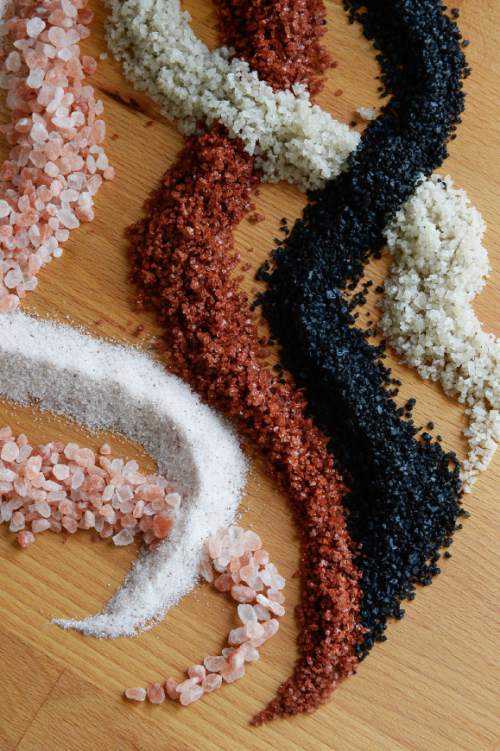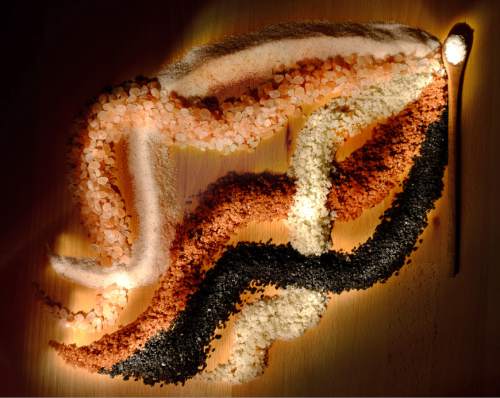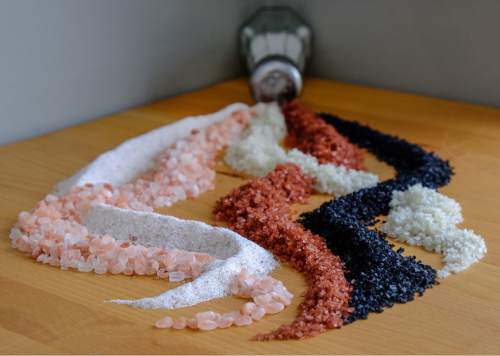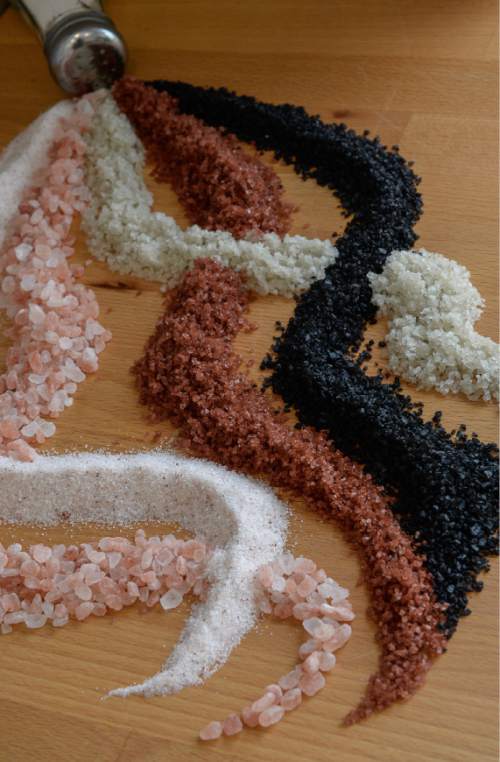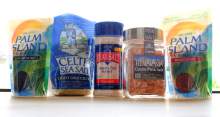This is an archived article that was published on sltrib.com in 2016, and information in the article may be outdated. It is provided only for personal research purposes and may not be reprinted.
Salt used to be so simple — just look for the blue container with a metal pouring spout.
But as cooks learn more about new cultures and foods through travel, television or the Internet, our view of this ancient mineral has expanded beyond the little girl with a yellow umbrella.
First, there are more options — from kosher and sea salt to flake and rock salt — found everywhere from Hawaii and France to the Himalayas and even Redmond, Utah, where a mineral-rich underground salt bed is the only thing that remains of an ancient sea.
Salt has more color, too. In addition to traditional white, there is gray, pink, red and black salt being used at high-end restaurants and sold at gourmet shops and some grocery stores.
Some of these salts are best as "seasoning" salts, which bring out flavors during cooking; others are best as "finishing" salts, providing a fresh burst of flavor and crunch just before serving. When it comes to finishing salts, a little goes along way, author and salt guru Mark Bitterman writes on The Meadow, his gourmet salt shop and website (themeadow.com).
"You need a mere sprinkle of these extraordinary salts to make a huge impact on your food," he said. "You may pay more than you're used to up front, but you use much less with fantastic results."
While restaurants, chefs and cookbook authors tout these unique salts, there are still the health studies that say consuming too much sodium can raise blood pressure, which in turn contributes to heart and kidney disease.
The studies raise questions for chefs such as Fabrizio Aielli, owner of the Sea Salt restaurants in Naples and St. Petersburg Fla., where more than 130 salts are on hand for chefs to use.
"Salt is the most important mineral in our life," Aielli told members of the Association of Food Journalists during its recent conference in St. Petersburg. "Without salt, we cannot really live. Our body cannot function. But so many people are going against it, saying salt is no good for you."
The real culprit of our overconsumption, he said, is store-bought soups, pizzas and other processed and packaged foods, which are filled with sodium.
When you cook food at home, it's easier to control the level of salt, said Aielli. But don't leave salt out, either. "Food needs salt to give it flavor," he said. Use less salt during cooking and add a good finishing salt at the end, where even a small amount will give the most punch.
When purchasing salts, read the labels, as many cheap table salts are processed and stripped of trace minerals and include anti-caking chemicals, such as aluminum, which means they won't clump.
Wondering where to begin your salt journey? Here are five of the most common gourmet offerings.
White for beginners
For those who want to expand beyond regular table salt and don't know where to begin, invest in a bottle of sparkling white fleur de sel, which means "flower of salt" in French. The name refers to the harvesting method, as workers hand scrape the top layer of salt before it sinks to the bottom of large evaporative pans. Fleur de sel "commingles gently with food, adding a mild, delicate crunch," Bitterman says. It is "the best all-around finishing salt out there."
Feeling gray
Sel gris, or gray salt, is another favorite of chefs. It comes from the same evaporative pans as fleur de sel, but it is allowed to come in contact with the bottom of the evaporative pan, giving it a gray tone. Laden with minerals and with a moist texture, sel gris is good for finishing steaks, roasts and hearty vegetables, but also is ideal for cooking and baking.
Think pink
Himalayan pink salt comes from an ancient ocean in the Himalayan Mountains that dried up hundreds of millions year ago. It is high in trace minerals and can usually be found in two sizes: coarse, for grinders, or fine. It's a good replacement for regular table salt, but has an intense flavor, so a little goes along way.
Aloha red
During the harvesting process, Hawaiian salt is infused with baked red alaea clay, which contains dozens of minerals. "These red salts were used historically for ceremonial purposes such as blessing and purifying the seagoing canoes, implements and important household items," Bitterman says. They have a "bright oceanic saltiness and are slightly ferrous and minerally."
Beautiful black
This salt is harvested in various places around the world; the most well-known is from Hawaii. It is a sea salt that has been blended with activated charcoal, which provides it dark color and some additional minerals. "But the real fun is in the effect it brings to food," Bitterman writes. "Sprinkled on grilled fish, plantains, fruit salads, pan-seared scallops, or, perhaps most startlingly, sushi and sashimi, is where this salt can, quite literally, make your food shine."


